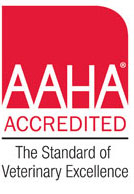Educational Articles
-
A narcoleptic episode involves sudden collapse and loss of movement in which the pet literally falls asleep, often while physically active, then wakes up abruptly and proceeds as if nothing happened. Although you may not be able to stop the episodes, you may be able to reduce the frequency and severity of events by identifying possible patterns that precipitate the incidents.
-
Polyps are benign fleshy growths that originate from the cells lining a cat's nasal passages, leading to a variety of clinical signs such as sneezing, difficulty breathing, and recurrent ear infections. The various diagnostic tools and treatment approaches are explained in this handout.
-
Nasopharyngeal polyps are benign idiopathic masses originating from the middle ear that extend either down the eustachian tube or into the external ear. They can cause stertor, nasal discharge, otitis, otic discharge and head tilt. Diagnosis may involve visualization through otoscopic exam or behind the soft palate, but usually needs radiographic evidence or more advanced imaging such as CT or MRI. Treatment involves debulking the mass through traction which has a high rate of recurrence, or more advanced surgery into the bulla to remove the source of the polyp.
-
Nose Bleeds (Epistaxis) in cats can be extremely unsettling for the pet owner. Most acute (sudden) nosebleeds are caused by simple trauma or by upper respiratory tract infections. This handout discusses nosebleeds in cats, the various causes of this condition, first aid recommendations and possible testing to find the root cause of the problem.
-
Nose Bleeds (Epistaxis) in dogs can be extremely unsettling for the pet owner. Most acute (sudden) nosebleeds are caused by simple trauma or by upper respiratory tract infections. This handout discusses nosebleeds in dogs, the various causes of this condition, first aid recommendations and possible testing to find the root cause of the problem.
-
A nutraceutical is a food or food product that reportedly provides health and/or medical benefits. In addition to diet modifications, exercise, weight loss, and medications, joint support nutraceuticals are also helpful in an osteoarthritis management program. Nutraceuticals are not subjected to the same testing and regulation as pharmaceuticals. Your veterinarian can advise you on products that have been evaluated and have yielded positive effects.
-
A nutraceutical is a food or food product that reportedly provides health and medical benefits. Specific nutraceuticals are commonly used in the management of osteoarthritis in dogs. Because nutraceuticals are not subjected to the same testing and regulation as pharmaceuticals, it is always best to consult your veterinarian before giving any to your dog.
-
Nutritional changes can improve the management and treatment of pancreatic diseases in cats. Diet type and pancreatitis in cats may not be as crucial as in dogs. Diet factors for managing pancreatitis, exocrine pancreatic insufficiency, diabetes mellitus, and insulinoma are discussed. Recommendations for feeding diabetic cats and approaching hypoglycemia are also described.
-
Nutritional changes can improve the management and treatment of pancreatic diseases in dogs. To prevent chronic pancreatitis relapses, diet adjustments will be necessary. Diet factors for managing exocrine pancreatic insufficiency, diabetes mellitus, pancreatitis, and insulinoma are discussed. Recommendations for feeding diabetic dogs and approaching hypoglycemia are also described.
-
Chronic kidney disease is frequently diagnosed in aging cats. Nutrition plays an important role in managing CKD in cats. Commercial diets for cats with CKD are developed support kidney function while maintaining body condition. A kidney support diet contains less protein, sodium, and phosphorus and increased omega-3 fatty acids. Your veterinarian will help you choose an appropriate formulation for your cat which will slow the progression of this disease, contributing to both life expectancy and quality of life.

